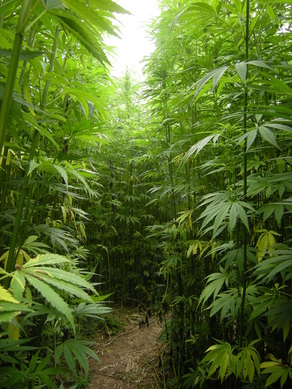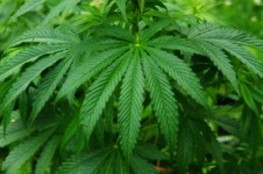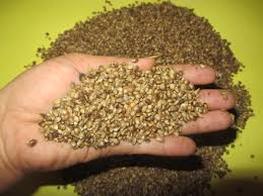- Guided Tours
- Self Guide Smartphone Tour
-
Revere Bells Index
- The Stickney Revere Bell Listings of 1976
- Ashby Mass. Revere Bell
- Paul Revere Bell of Beverly
- Revere Bells in Boston >
- California's 2 Paul Revere Bells
- Paul Revere & Son's Bell Westborough Massachusetts
- Falmouth, Massachusetts
- Revere Bell Fredericksburg VA
- Revere Bell Hampton NH
- First Parish Church of Kennebunk
- Revere Bells in Maine
- Revere Bell in Mansfield
- Revere Bell of Michigan
- Revere Salem Mass Bell
- Roxbury First Unitariarn Universalist Church and their Revere Bell
- Revere & Son Bell, Savannah Georgia
- Singapore Revere Bell
- Tuscaloosa Bell >
- Revere Bells Lost in Time
- Revere Bells Washington DC
- Revere Bell in Wakefield, Mass
- Revere Bells Woodstock VT
-
Bostonians
- Edward F Alexander of The Harvard 20th Civil War Regiment
- Polly Baker
- John Wilkes Booth
- The Mad Hatter, Thomas, Boston Corbett who Killed John Wilkes Booth
- Richard-Henry-Dana-Jr
- James Franklin
- Benjamin Harris of Publick Occurrences
- Oliver Wendell Holmes, Jr.
- William Lloyd Garrison
- USS Thomas Hudner DDG116
- Edward Hutchinson Robbins Revere
- Amos Lincoln
- King Philip
- Mayor's of Boston
- Mum Bett & Theodore Sedgwick
- James Otis
- Paul Joseph Revere
- Reverend Larkin's Horse
- John Rowe >
- Be Proud to be Called a Lucy Stoner
- Rachel Wall , Pirate
- Paul Revere the Coroner of Boston
- Deborah Sampson
- Who was Mrs. Silence Dogood?
- Dr. Joseph Warren's Dedication
- History Blog
- Lilja's of Natick
-
Collage of Boston
- 4th of July Parade, Bristol RI
- Boston Harbor
- The Customs House
- Forest Hills Cemetery
- Georges Island
- Nonviolent Monument to Peace - Sherborn
- The Battle Road
- Skate bike and scooter park
- Cassin Young & USS Cassin Young
- MIT
- Historic Charles River
- The Roxbury Standpipe on Fort Hill
- John & Abigail Adams National Park
- Boston's Racial History - Ante-Bellum
- New Page
|
Did you know that the strands of hemp used in rope making is always twisted counter-clockwise? Let me explain this later. Hemp and Manilla were the two strongest natural sources for nautical rope. Anthropologist suggest hemp was used over twelve-thousand years ago as food and twine. Hemp production was a major source of income and employment in Colonial Boston. Try lifting hay to the second floor of a barn without rope. How would your oxen convey pulling power to your plow? What would you use to secure your baggage to the top of your stagecoach? How would you control or restrain prisoners, or wild horses? Spun hemp, twisted into rope, is still a valued product today. For a nautical town like Boston in the 18th century, hemp accounted for nearly 600 jobs among fourteen manufacturies (sic). Approximately 300 people on Nantucket Island were employed in six hemp rope making facilities. A British man of war, with six decks, 65 cannons and 400 sailors, would require thirty miles of rope to begin a voyage replacing this rope every two years. A frigate with three decks and 34 cannons would require twenty miles of rope. Since the early twentieth century thirty democracies permitted the production of hemp. The United States has restricted hemp production to industrial use. I can't imagine why. Perhaps it is due to the dubious reputation of hemp's botanical cousin, cannabis. Hemp is economical. It grows very fast and thrives in North America. Beyond rope making the seeds and leaves are edible. Well then, you can produce oil, milk and flour from hemp but we will limit our discussion to its use in Boston just before the Boston Massacre of March 5, 1770. John Gray's rope walk had two silos 1,000 feet long. It was the largest rope walk factory in Boston and possibly in the thirteen colonies. Gray employed 100 people and half were typically temporary employees, generally from the seafaring trade or the British military. It was common for commercial sailors to seek temporary employment while they waited for their next ship. Merchants often provided them with temporary shelter. This was the cycle of employment for most commercial seamen. Permanent employees were referred to as "rope-walkers" and temps were given a demeaning title of, "Jack-Tars".[i] Jack-Tars worked the ropes while waiting for their next ocean vessel. It was common to wait six weeks to six months and then sail for two or three years. On-board ship, sailors would slick back their hair with tar. Why Tar? It emulsifies at a very low temperature. Then again, stringy long hair could entangle in ropes and sails and lead to terrible injuries or death. Once on shore seamen didn't wash out the tar even if they could, as everyone in the 18th century felt bathing led to illness. On the weekend immediately prior to the Boston Massacre of March 5, 1770, Patrick Walker a private in the British 29th regiment approached Gray's Rope Walk at Kilby and Milk Streets. He was asked by a rope-walker, Samuel Green, if he was looking for work. Green was not interested in Walker's financial situation. Walker needed work as his military pay was eight pence a week. Green was attempting to keep Walker unemployed as the British soldiers were taking any work available and driving down wages and impacting the economy. Samuel Green, responded, per Walker's deposition after the massacre, "sure, go clean my sh_ _ t _ r" (paraphrased). Walker took some offense and a fight ensued and ended with a very un-happy Walker, cut, bleeding and bruised. He was assisted back to his barracks by a fellow soldier. Walker's appearance angered the regiment. The soldiers returned in force, but not quite enough as they barely managed to retreat to their barracks. On Saturday March 3, 1770, the entire affair escalated into another brawl in the square that encompassed innocent women and children. On Sunday the pious ropewalkers observed the Sabbath. The British soldiers plotted their revenge. Participants in the brawls included Grenadiers William Warren and Mathew Kilroy, subsequently indicted for their participation in the Boston Massacre. On March 5, 1770, at 9:00 P.M., a lone British sentry was surrounded by seamen from the wharf, rope-walkers and jack-tars from the south end and dozens of volunteers responding to the call of "Fire, fire, fire." The town had over 500 volunteers that were trained to respond to the call to a fire. There was no fire. The volunteers intermixed with the seaman and rope-walkers creating a mixed crowd of over 200 citizens. In the end, water and buckets were not the tool of the moment. The rope-walkers and jack-tars were carrying sticks, bricks, cudgels and snow balls. Injuries were sustained by the soldier on guard duty and seven more soldiers that came to his assistance. One soldier was knocked to the ground and rose and fired his musket. Possibly all the other soldiers randomly fired into the crowd. Five people died and six more were wounded. Eight months later at trial, Mathew Kilroy, was found with malice and therefore guilty of manslaughter for firing on and killing the rope-walker Samuel Gray: they both participated in the weekend brawls (Samuel is not a relative of the rope-walk owner, John Gray). Hugh Montgomery was also similarly convicted. Five soldiers and one officer were found not guilty. Immediately upon sentence Kilroy and Montgomery pleaded “Benefit of Clergy.” This is a medieval law of the thirteen century designed to prevent the secular legal system from targeting clergy for political retribution. Clearly, the law was perverted over the centuries to the benefit of those tried in the secular courts. In support of their pleadings Kilroy and Montgomery were required to read the fifty-first psalm. This might imply that they were literate but they had eight months to memorize the psalm. With their life at stake they surely passed the test. As an endorsement and recording of their conviction each soldier is branded immediately on his thumb with the letter M. Should they ever be accused of manslaughter again they could be hung without a jury trial upon a judge’s order. Historians often suggest the Boston Massacre was the actual first shots that started the American Revolution. Is it terribly far-fetched to suggest it all started with hemp, spun into rope by the rope-walkers, who aggressively protected their livelihood and by their nature escalated events that lead to the Boston Massacre? Why then was hemp twisted to the right as it was made into rope? If you guessed it was because most or nearly all Puritans (unless you were a witch) were right-handed and twisting rope counter clockwise made use of the strongest wrists? My first answer also. We were wrong. Everyone in rope production simply new that hemp was far stronger twisting to the right as the ropewalker walked backwards and the jack-tar made the rope water tight by shellacking it with warm tar but it wasn't until the microscope was employed in 19th century that hemp showed an organic leaning to the right as it grew, strengthening the finished product as it is braided in the same direction. It did not matter if the hemp was grown in the northern or southern hemisphere. [i] At the Boston massacre trial John Adams refers to the five immediate victims as "Jack-Tars and saucy boys." This was an attempt to separate the victims from middle class respectable Bostonians. John Adams successfully defended the officer of the watch and six of the eight soldiers accused of manslaughter.
0 Comments
Leave a Reply. |
Categories
All
Archives
February 2020
|
- Guided Tours
- Self Guide Smartphone Tour
-
Revere Bells Index
- The Stickney Revere Bell Listings of 1976
- Ashby Mass. Revere Bell
- Paul Revere Bell of Beverly
- Revere Bells in Boston >
- California's 2 Paul Revere Bells
- Paul Revere & Son's Bell Westborough Massachusetts
- Falmouth, Massachusetts
- Revere Bell Fredericksburg VA
- Revere Bell Hampton NH
- First Parish Church of Kennebunk
- Revere Bells in Maine
- Revere Bell in Mansfield
- Revere Bell of Michigan
- Revere Salem Mass Bell
- Roxbury First Unitariarn Universalist Church and their Revere Bell
- Revere & Son Bell, Savannah Georgia
- Singapore Revere Bell
- Tuscaloosa Bell >
- Revere Bells Lost in Time
- Revere Bells Washington DC
- Revere Bell in Wakefield, Mass
- Revere Bells Woodstock VT
-
Bostonians
- Edward F Alexander of The Harvard 20th Civil War Regiment
- Polly Baker
- John Wilkes Booth
- The Mad Hatter, Thomas, Boston Corbett who Killed John Wilkes Booth
- Richard-Henry-Dana-Jr
- James Franklin
- Benjamin Harris of Publick Occurrences
- Oliver Wendell Holmes, Jr.
- William Lloyd Garrison
- USS Thomas Hudner DDG116
- Edward Hutchinson Robbins Revere
- Amos Lincoln
- King Philip
- Mayor's of Boston
- Mum Bett & Theodore Sedgwick
- James Otis
- Paul Joseph Revere
- Reverend Larkin's Horse
- John Rowe >
- Be Proud to be Called a Lucy Stoner
- Rachel Wall , Pirate
- Paul Revere the Coroner of Boston
- Deborah Sampson
- Who was Mrs. Silence Dogood?
- Dr. Joseph Warren's Dedication
- History Blog
- Lilja's of Natick
-
Collage of Boston
- 4th of July Parade, Bristol RI
- Boston Harbor
- The Customs House
- Forest Hills Cemetery
- Georges Island
- Nonviolent Monument to Peace - Sherborn
- The Battle Road
- Skate bike and scooter park
- Cassin Young & USS Cassin Young
- MIT
- Historic Charles River
- The Roxbury Standpipe on Fort Hill
- John & Abigail Adams National Park
- Boston's Racial History - Ante-Bellum
- New Page




 RSS Feed
RSS Feed